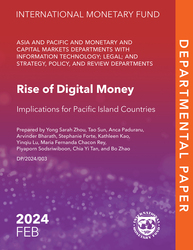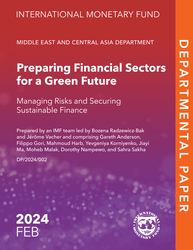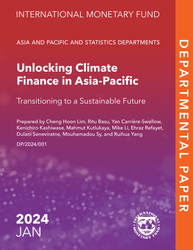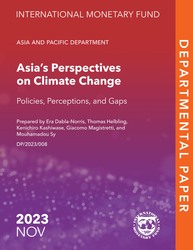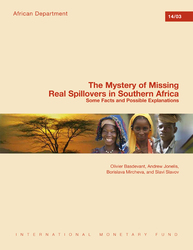
The Mystery of Missing Real Spillovers in Southern Africa: Some Facts and Possible Explanations
The Mystery of Missing Real Spillovers in Southern Africa: Some Facts and Possible Explanations
READ MORE...
Volume/Issue:
Volume 2014
Issue 006
Publication date: June 2014
ISBN: 9781484363447
$20.00
Add to Cart by clicking price of the language and format you'd like to purchase
Available Languages and Formats
| English |
Prices in red indicate formats that are not yet available but are forthcoming.
Topics covered in this book
This title contains information about the following subjects.
Click on a subject if you would like to see other titles with the same subjects.
Exports and Imports , Economics- Macroeconomics , DPPP , DP , GDP , Swaziland , real GDP , center , BLMNSZ dummy , growth impact , SA bank , world GDP , Real GDP growth , Spillovers , Exports , Imports , Business cycles , Africa , Sub-Saharan Africa , Southern Africa , Global
Also of interest
Summary
Anecdotal evidence suggests that the economies of South Africa and its neighbors (Botswana, Lesotho, Mozambique, Namibia, Swaziland, and Zimbabwe) are tightly integrated with each other. There are important institutional linkages. Across the region there are also large flows of goods and capital, significant financial sector interconnections, as well as sizeable labor movements and associated remittance flows. These interconnections suggest that South Africa’s GDP growth rate should affect positively its neighbors’, a point we illustrate formally with the help of numerical simulations of the IMF’s GIMF model. However, our review and update of the available econometric evidence suggest that there is no strong evidence of real spillovers in the region after 1994, once global shocks are controlled for. More generally, we find no evidence of real spillovers from South Africa to the rest of the continent post-1994. We investigate the possible reasons for this lack of spillovers. Most importantly, the economies of South Africa and the rest of Sub-Saharan Africa might have de-coupled in the mid-1990s. That is when international sanctions on South Africa ended and the country re-integrated with the global economy, while growth in the rest of the continent accelerated due to a combination of domestic and external factors.
Copyright © 2010 - 2024
Powered by:
AIDC
